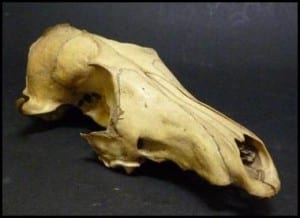Specimen of the Week: Week Thirteen
By Emma-Louise Nicholls, on 9 January 2012
 For Christmas, besides a cuddly vulture with bright pink feet and a fantastic variety of different species of chocolate boxes, more than one family member demonstrated how well they know me as I received not one, but two copies of Frozen Planet- hoorah! I am now debating whether to swap one for something else or put two tvs side-by-side and see if I can watch it in stereo? Eitherway, inspired by this fantastic series (coincidentally mentioned in fact in a recent blog about the validity of such documentaries), this week’s specimen of the week is…
For Christmas, besides a cuddly vulture with bright pink feet and a fantastic variety of different species of chocolate boxes, more than one family member demonstrated how well they know me as I received not one, but two copies of Frozen Planet- hoorah! I am now debating whether to swap one for something else or put two tvs side-by-side and see if I can watch it in stereo? Eitherway, inspired by this fantastic series (coincidentally mentioned in fact in a recent blog about the validity of such documentaries), this week’s specimen of the week is…
**!!!THE ARCTIC FOX!!!**
Five fantastically foxy fabulous facts now follow:
1) The Arctic fox is Daz Ultra white when wearing its winter coat, but turns to the dark side during the summer when its coat becomes a murky brown. This summer coat is also half as thick to ensure the little furry critters don’t overheat chasing lemmings in the summer sun. See here for images.
2) Besides the conventional white arctic fox aforementioned, there is also apparently a rarer colour morph that comes in a trendy blue.
3) The arctic fox has a coat so woolly and thick that it holds the highly coveted record for the ‘best insulative properties’ in the Mammal Olympics. Pretty handy considering they inhabit areas of the world that get as cold as minus 50 degrees celsius.
4) When the natural menu of life is short on food items, the arctic fox is able to reduce its metabolic rate by 50% to conserve energy. It is not a form of hibernation however, as the fox is able to remain active during this time, thus upping its chances of finding food before it starves, which sadly, is what kills the majority of adult foxes.
5) Due to global warming more and more of the arctic fox’s territory is being encroached upon by the much larger red fox (the species we have here in England). In captivity these two species can produce sterile offspring. In the wild however, the red fox is more likely to have the arctic fox for dinner. Not in a romantic way.
If you would like to meet our Arctic fox (skull), or any of our other canids, pop down to the Grant Museum of Zoology. In fact this week would be a fantastic time to pop in as we are in the middle of some renovation work and currently have specimens out all OVER the place!
2 Responses to “Specimen of the Week: Week Thirteen”
- 1
 Close
Close




…Stereo TV?!
Good stuff, but what species is the monkey? That’s approximately how I looked last time I used a mirror…